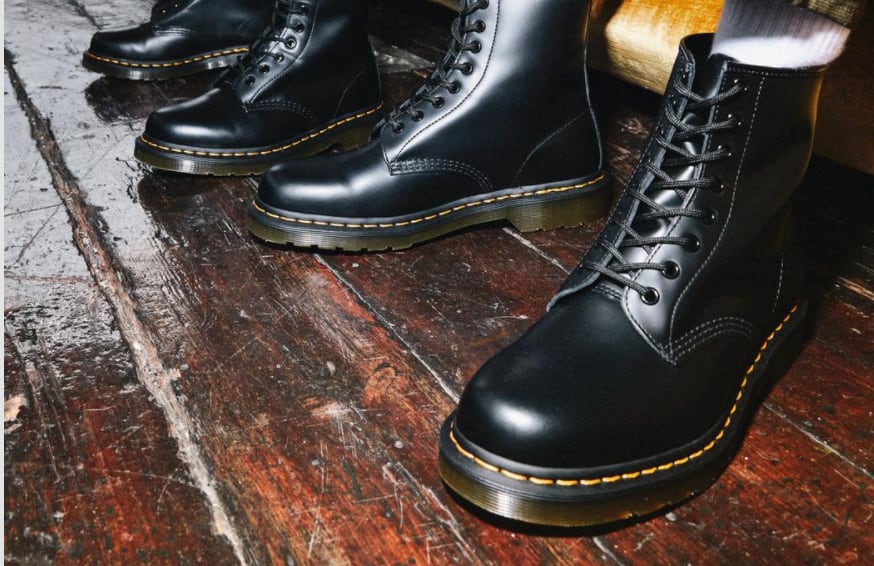Unless you’ve turned your COVID-19 quarantine into a lengthy stay underneath a rock, you may be very well aware that 90s fashion is experiencing a bit of a resurgence. Grunge is back, baby, and with it, the glorious return of Doc Martens’ chunky boots.
While these brogans can currently be found in just about any color, the original black Dr. Marten boot traces its roots back to World War II, when Klaus Märtens, then a 25-year-old doctor in the German army, injured his ankle skiing.
Returning to the field after his Bavarian getaway, Märtens “found that his standard-issue army boots were too uncomfortable on his injured foot,” according to Fashion Model Directory.
So, Märtens opted to develop his own.
“While recuperating, he designed improvements to the boots, with soft leather, and air-padded soles,” his biography reads. “When the war ended and some Germans looted valuables from their own cities, Maertens took leather from a cobbler’s shop. With that leather, he made himself a pair of boots with air-cushioned soles.”
With the help of a college friend, Dr. Herbert Funk, Märtens decided to take his innovative design and head into the boot business, beginning by using leftover rubber from the Luftwaffe airfields to construct the soles of his new line of footwear.
Märtens and Funk made headway when the pair opened the company’s first factory in Munich, but their big break came in 1959, when a boot company based in England discovered Märtens’ innovative design.
“The magic moment happened when, through an advert in a British professional magazine, the Griggs family — working-boots makers — met the German doctors Maertens and [Funk],” wrote Martin Roach, author of Dr. Martens: The Story of an Icon.
“At that time it was an orthopaedic boot sold 80 [percent] to German women over the age of 40. They felt there was a bigger market but they needed a partner, hence the ad.”
Märtens subsequently rebranded his footwear as Dr. Martens and set up shop in the English county of Northamptonshire.
“An exclusive license was acquired and a few key changes made, including an altered heel, a bulbous but simple upper, a distinctive yellow welt stitch, a two tone grooved sole edge and a unique sole pattern,” the Dr. Martens website reads.
“The boots were branded as ‘Airwair’ and came complete with a black and yellow heel loop featuring the brand name and the slogan, ‘With Bouncing Soles’ (based on Bill Griggs’ own handwriting). Taking its name from date of its inception, April 1st, 1960, the eight-holed 1460 Dr. Martens boot had arrived.”
Since then, the design has undergone remarkably few changes, though Dr. Martens does now produce a vegan option. The price tag, however, has grown exponentially, from its two-pound workman’s origins to a $150 fee — all for a shoe that says, “I don’t care how I look.”
That’s fashion for you.
The boots are so prolific that even Pope John Paul II was known to don a custom white pair. And he was in good company, having been inspired by both the Dalai Lama and Madonna, according to the Associated Press.
One can only hope that when his holiness wore his unique pair, he’d cruise Vatican City singing, “When you call my name it’s like a little prayer, I’m down on my knees, I wanna take you there.”
Sarah Sicard is a Senior Editor with Military Times. She previously served as the Digitial Editor of Military Times and the Army Times Editor. Other work can be found at National Defense Magazine, Task & Purpose, and Defense News.
Tags:
dr. martensdoc martensarmy bootsworld war IIdr. klaus martendoc martens bootsdoc martens wwiidoc martens popeIn Other News














